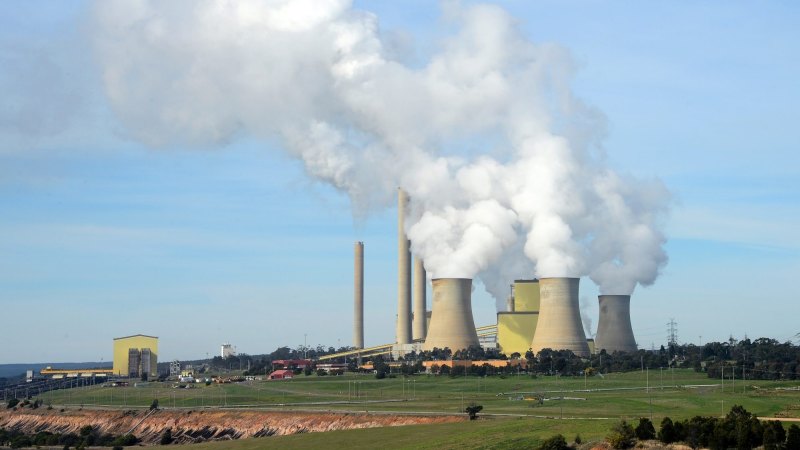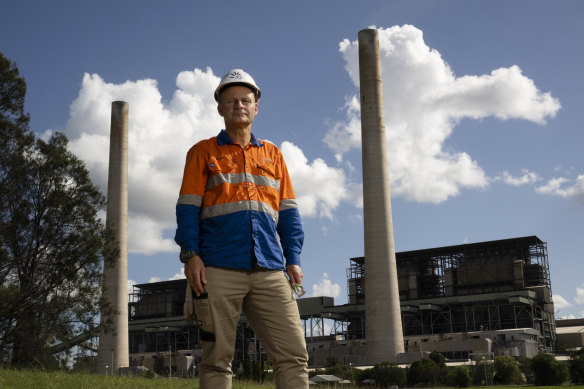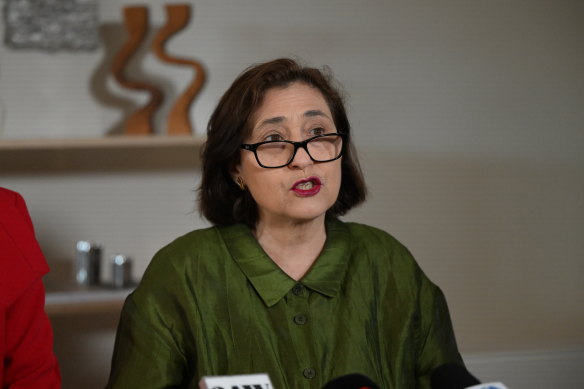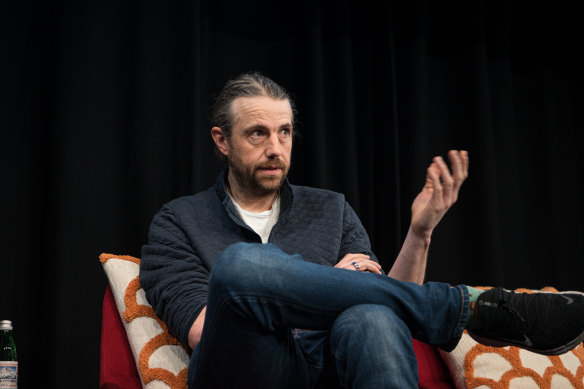Save articles for later
Add articles to your saved list and come back to them any time.
Victorian taxpayers could be forced to foot the bill if the state’s largest remaining coal-fired power station runs into financial strife before its anticipated closure in 2035.
The Andrews government has reached an agreement with energy giant AGL that guarantees its Loy Yang A power station – which supplies about one-third of Victoria’s electricity – will be available to supply the grid with a steady pulse of energy for another 12 years to avoid blackouts and provide Latrobe Valley workers with certainty.
AGL chief operating officer Markus Brokhof believes Loy Yang A will operate profitably until its closure in 2035.Credit: Janie Barrett
But under the deal, Victoria has also agreed to shoulder an undisclosed portion of the financial risk if the business runs into trouble before 2035, including the possibility that cheaper renewable energy renders the ageing plant financially unviable.
The agreement – announced in the Latrobe Valley on Monday by Energy Minister Lily D’Ambrosio and AGL chief operating officer Markus Brokhof – follows concern about whether the grid is equipped to handle a rapid switch to variable wind and solar energy.
The binding agreement means AGL and Victoria must collaborate to guarantee the “orderly closure” of Loy Yang A by June 30, 2035. The deal follows the announcement by AGL in September that it was bringing forward the closure date of Loy Yang A by a decade.
In a statement, AGL said the government had agreed to a “risk sharing mechanism” to keep the plant operating “in the event of adverse market conditions” before the scheduled closure date.
Energy and Resources Minister Lily D’Ambrosio refused to outline the terms of the deal with AGL.Credit: Joe Armao
Both D’Ambrosio and Brokhof on Monday refused to discuss the terms of the agreement, how the risk-sharing mechanism would work or the potential liability for taxpayers.
“The risk-sharing mechanism is of a commercial nature, and we are not disclosing any details of the risk-sharing mechanism,” Brokhof said.
Brokhof said he believed the mechanism would only apply in “really adverse market conditions”.
“We believe the power station can run profitably until closure, but in parallel we are sticking to our clear ambition to build 12 gigawatts of renewable and firming capacity,” he said.
Mike Cannon-Brookes’ investment company, Grok Ventures, succeeded in blocking power giant AGL’s proposed break-up.Credit: Flavio Brancaleone
Asked about the circumstances under which the government would fund the operation of the power station, D’Ambrosio said: “It is not about this. We need Loy Yang A to be there so that we have sufficient supply to meet our needs, to keep the lights on and to give us the opportunity to build the replacement renewable energy that we are right now delivering.”
The electricity generator is under pressure from its major shareholder, software billionaire Mike Cannon-Brookes’ Grok Ventures, to close the massive generator before 2035 and rapidly decarbonise its operations in line with the Paris climate accord.
Grok Ventures would not comment. But AGL’s largest shareholder is understood to be engaging with the company on the latest deal and other matters.
Analysts at investment bank RBC Capital Markets, who track AGL’s performance, said there was little financial clarity on how the risk sharing and minimum operational and performance availability levels agreed to with the government would work.
But, the deal was likely to provide AGL with certainty around its future cash flows from Loy Yang A, analysts said.
One possible form it might take was by an agreed-upon lower “floor price” limit and an “upper ceiling” limit for the price of electricity.
“Any time the plant realises an electricity price lower than the floor, then the Victorian state government would provide a top-up payment and these payments would be tracked on a cumulative basis,” the analysts said.
“Conversely, if a top-up ‘debt’ exists and Loy Yang A earns a realised price above the ceiling, then the revenue above the ceiling price would be paid to the Victorian state government to pay down the top-up ‘debt’.”
In the lead-up to last year’s state election, Labor announced plans to revive the State Electricity Commission. The details are still unclear, but at the time Premier Daniel Andrews said the government would hold a controlling interest in renewable energy projects, which would generate the 4.5 gigawatts of power needed to offset the closure of Loy Yang A.
Even under the flurry of existing and committed energy projects in the pipeline, modelling by the Australian Energy Market Operator has suggested Victoria could face power reliability gaps as early as 2024, with more serious breaches possible from 2028 onwards.
Victorian Greens coal transition spokesman Tim Read said the government must come clean on the risk-sharing mechanism, and whether it involves the state taking on the financial risk of keeping an outdated, polluting brown coal power stations running longer than its private owner otherwise would.
“Labor needs to reassure Victorians that they’re not taking on a future financial risk in order to prop up the state’s biggest carbon polluter,” Read said.
Opposition energy spokesman David Hodgett said the government’s SEC had no identified projects and no funding partners, 10 months after being first announced.
Get the day’s breaking news, entertainment ideas and a long read to enjoy. Sign up to receive our Evening Edition newsletter here.
Most Viewed in National
From our partners
Source: Read Full Article








